Family variety
There are about 44 members of the highly specialised Frogfish family. All Frogfish are a similar shape but can vary greatly in size colouration, patterns and markings. There is alot of variety within species as well, two frogfish of the same species can have very different markings and colours, making it very difficult to correctly identify many frogfish.
Size
Full grown frogfish vary from the Bandfin Frogfish (Antennatus dorehensis) only 5cm to the Giant Frogfish (Antennarius commersoni) that can reach 40cm.
Behaviour
Frogfish are ambush predators, catching their food using a lure on a long filament attached to their heads. As a result, they spend most of their time stationary, waiting for the right fish to take the bait. Unsuspecting fish are drawn in to investigate what looks like a tasty snack, not noticing the perfectly camouflaged frogfish close behind it. In a lightning quick action the unucky prey is sucked into the frogfishes' enormous mouth.
Because of their unique feeding strategy and their amazing camouflage they rarely need to move to pursue prey or escape predators. When they do move then often walk on modified fins as legs. They can swim but rarely do so unless escaping danger or mating.
Distribution
Frogfish are found throughout Asia’s tropical waters. In certain areas where conditions are very favourable, they can be quite common.
Habitat
Frogfish can be found in a variety of habitats. They particularly like coastal areas with plenty of algal growth and are often seen on or near to sponges. They can also be seen on shipwrecks, jetties and artificial reefs.
Diet
Frogfish eat a variety of fish and crustaceans.Their bones are extremely flexible, allowing them to swallow a fish up to twice their own size. They have even been known to eat other. Although they will happily eat almost any fish they can catch, different species have specific favourites, their lures each mimicking a different appealing snack for passing fish.
Reproduction
As she becomes ready to mate the female starts producing eggs.As her abdomen swells, she becomes larger & more buoyant, attracting the attention of nearby males. As her buoyancy increases the male starts to nudge her repeatedly until both float to the surface where the eggs are released and fertilised, forming a floating gelatinous raft. This raft is usually left to float pelagically, however some species attach the eggs to their bodies and guard them until they hatch. Juvenile frogfish are pelagic for about 2 months once hatched, after which they settle on a reef.
Defences
The best defence a frogfish has is its camouflage. Not only is it essential for catching prey, it also helps baffle would be predators. Most potential predators have great difficulty in picking out a Frogfish from the surrounding habitat unless they move. Frogfish are also able to suck in water and puff up their bodies, making them too large for most predators to swallow.
Threats
Frogfish are not sought after by fisherman and are not threatened by over-fishing. Their greatest threats are loss of habitat & pollution.
Did You Know?
Frogfish may appear slow and clumsy, but they can attack their prey in as little as 1/6000 of a second.
The fastest movement in the animal kingdom!
Intro
Frogfish are one of those weird & wonderful underwater inhabitants that divers simply love to discover.
In addition to their superb camouflage, their incredible variety of colour and texture make them fascinating to observe, while their behaviour is equally unusual.
When Frogfish bother to move at all, they tend to walk, rather than swim. They fish rather than activley hunt and their downturned mouths and unusual body shape add to a real sense of character.
Popular species 1
Giant Frogfish
(Antennarius commersoni)
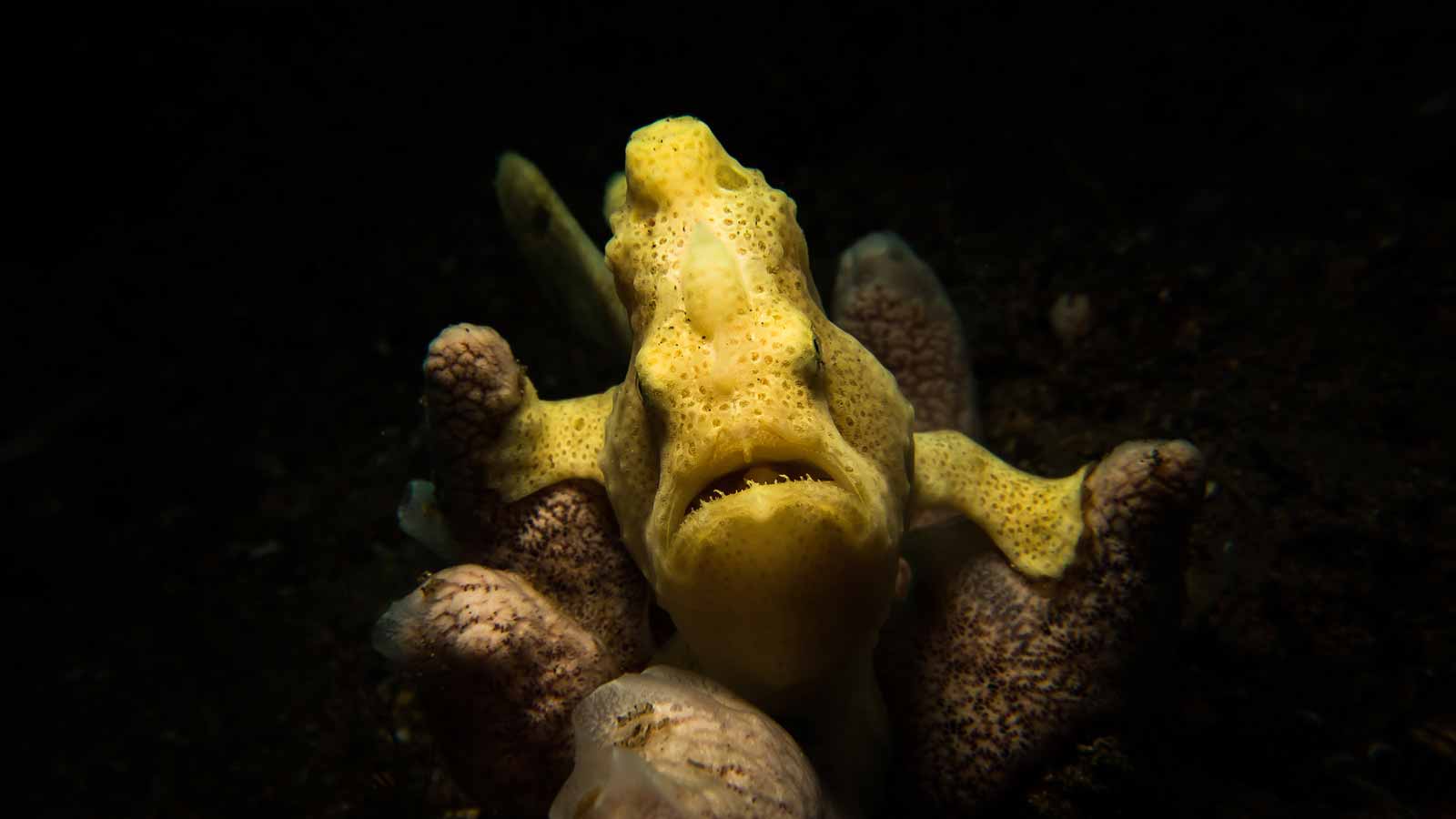
The Giant Frogfish it the largest in the family and can grow up to 50cm. They can vary significantly in appearance to blend in to their habitat and surroundings, but often have growths and warts to help with camouflage. Identified best by their large size, they are often found perching on the top of sponges or high above the bottom on wrecks or artificial reefs.
Popular species 2
Clown Frogfish
(Antennarius maculatus)
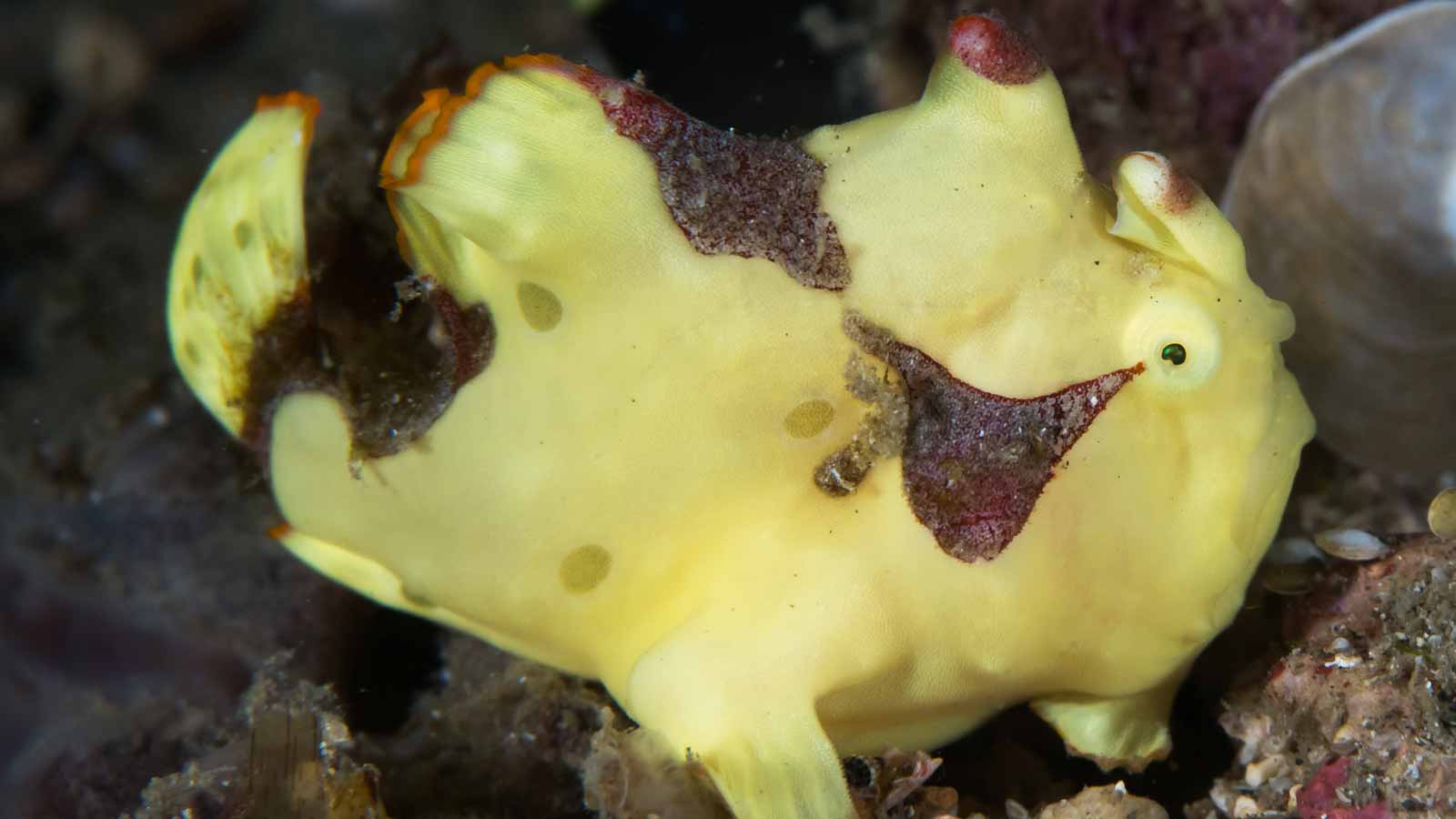
With their colourful designs Clown Frogfish are one of the easiest frogfish to identify. Usually yellow or white with black markings these little frogfish can be some of the most striking in their family. Juveniles also have incredible and easily identifiable markings. They are sometimes known as the Warty Frogfish.
Popular species 3
Painted Frogfish
(Antennarius pictus)
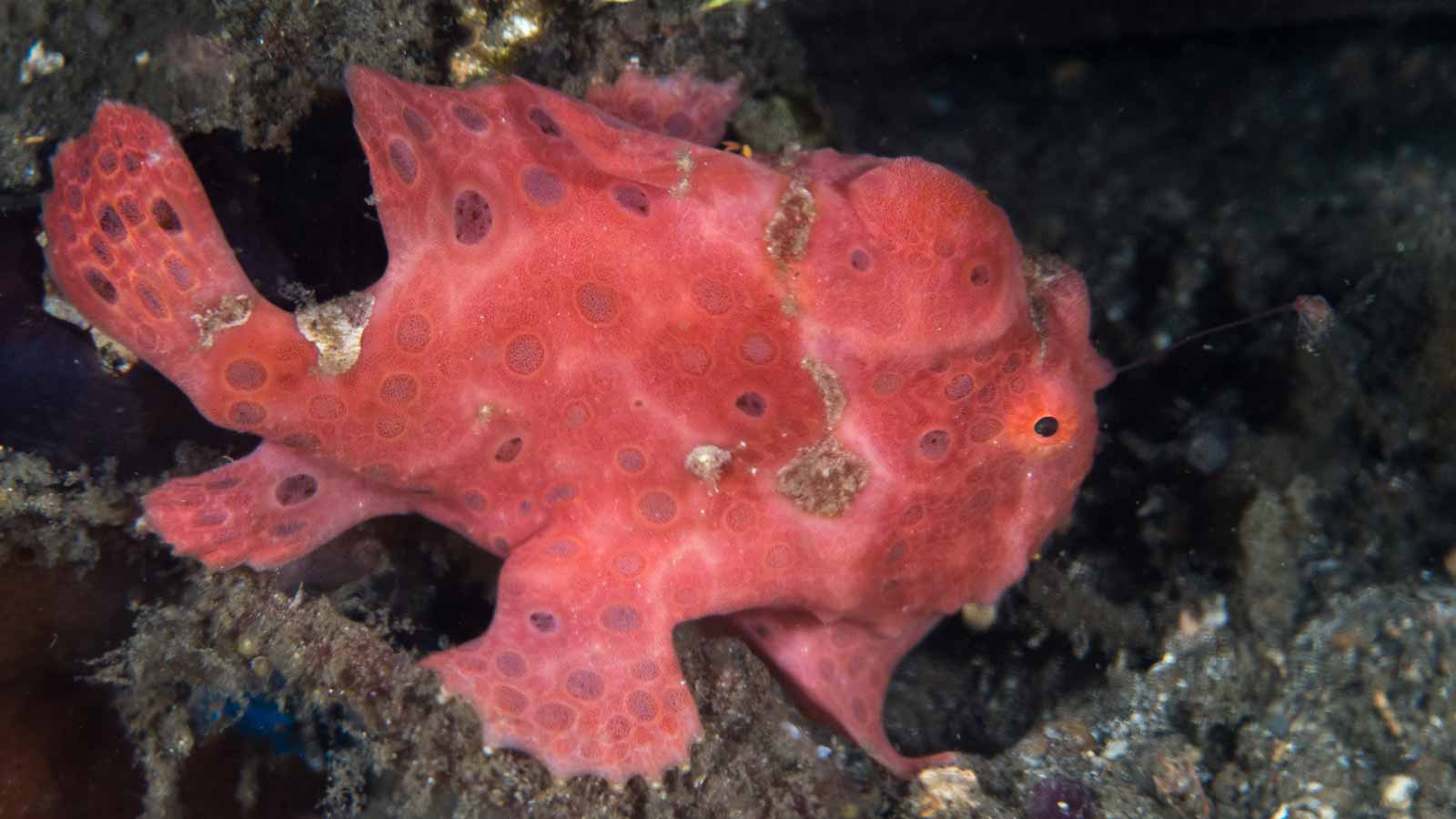
This species comes in a wide variety of colours and markings, including pink, red, black, white & yellow. Some have smooth skin with markings that mimic the pores of the sponges they live in. Others have growths and warts to mimic algae in their environment. Juveniles also have incredible and easily identifiable markings, often mimicking poinsonous Flatworms.
Popular species
Frogfish are a magical find on any dive. Discover some of the most popular species encountered by scuba divers.
FACTFILE
 SPECIES: 44
SPECIES: 44
 SIZE RANGE: 4-40 cm
SIZE RANGE: 4-40 cm
 DISTRIBUTION:
DISTRIBUTION:
Global. Widespread throughout region.
 HABITAT:
HABITAT:
Coastal areas with plenty of algal growth & sponges. Wrecks, jetties and artificial reefs.
 THREATS:
THREATS:
Few
Identification tips
-
Frogfish have a lure that entices their prey close enough to be caught in their lightening fast jaws.
-
A large, downturned mouth is characteristic of the frogfish family. If you are lucky, you might even see them yawn!
-
A Frogfish's skin pattern often adapts to blend in seamlessly with their surroundings. Blotches, warts and patchy growths add the finishing touches to their camouflage.
-
Frogfish have modified fins that look more like legs. Although they can swim, they often choose to walk instead.
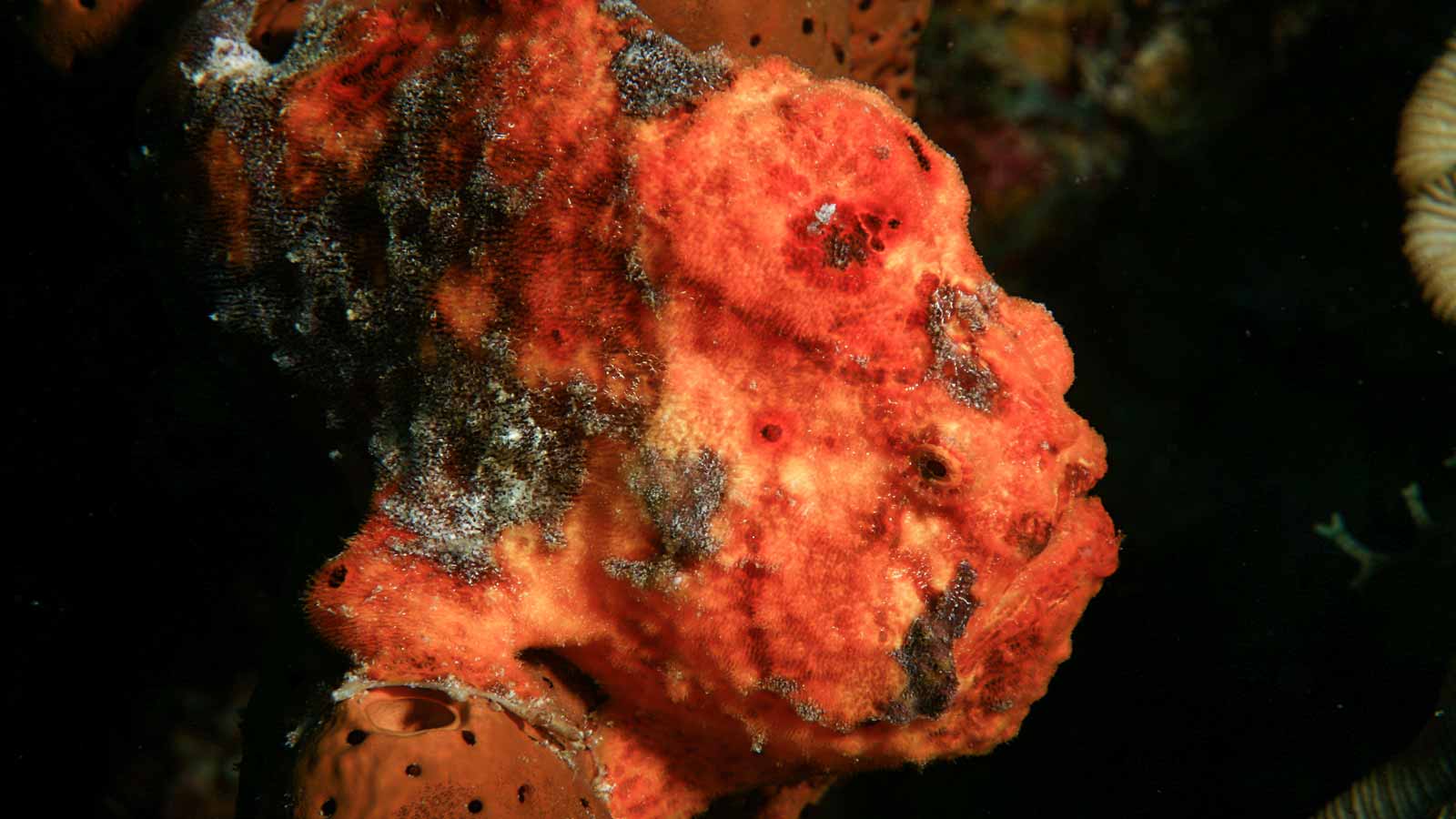
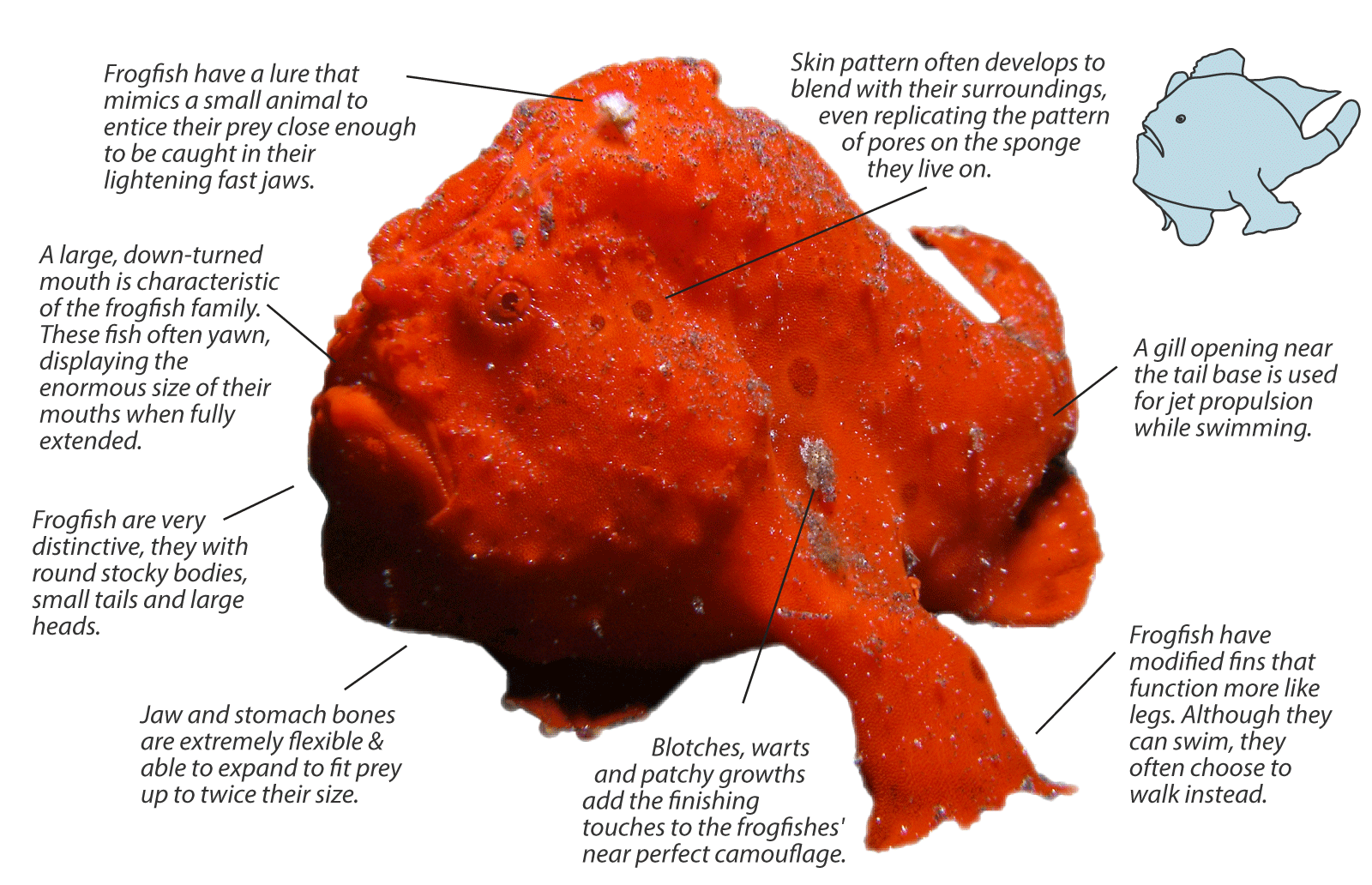



SPECIES: 44
SIZE RANGE: 4-40 cm
DISTRIBUTION:
HABITAT:
THREATS: